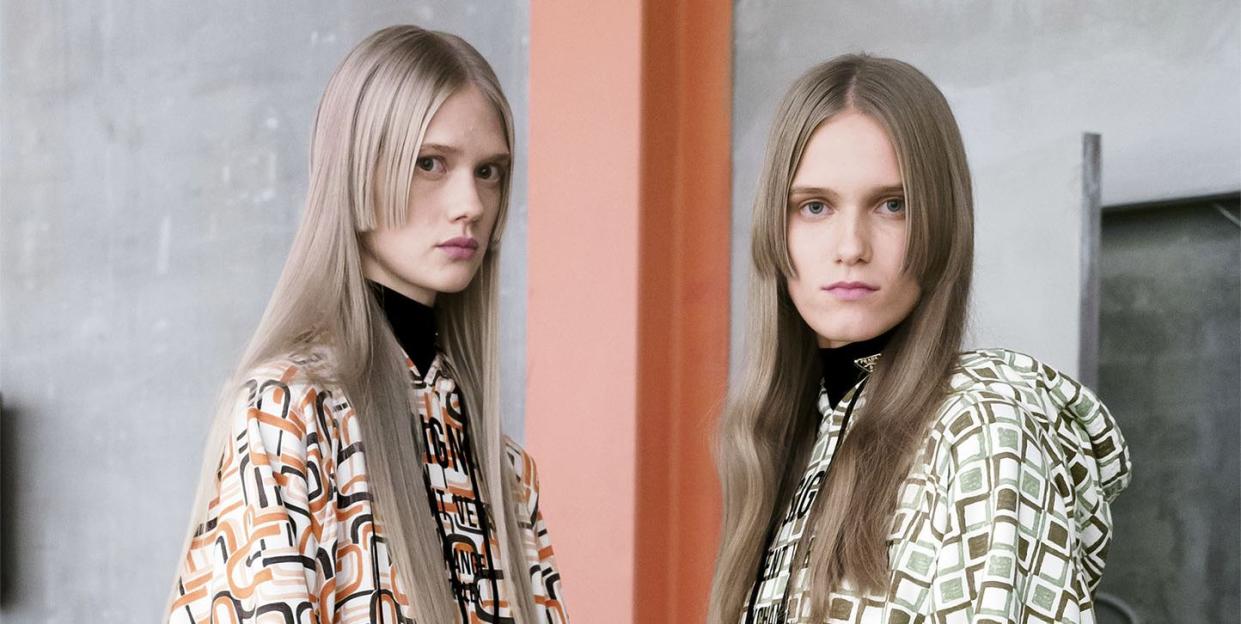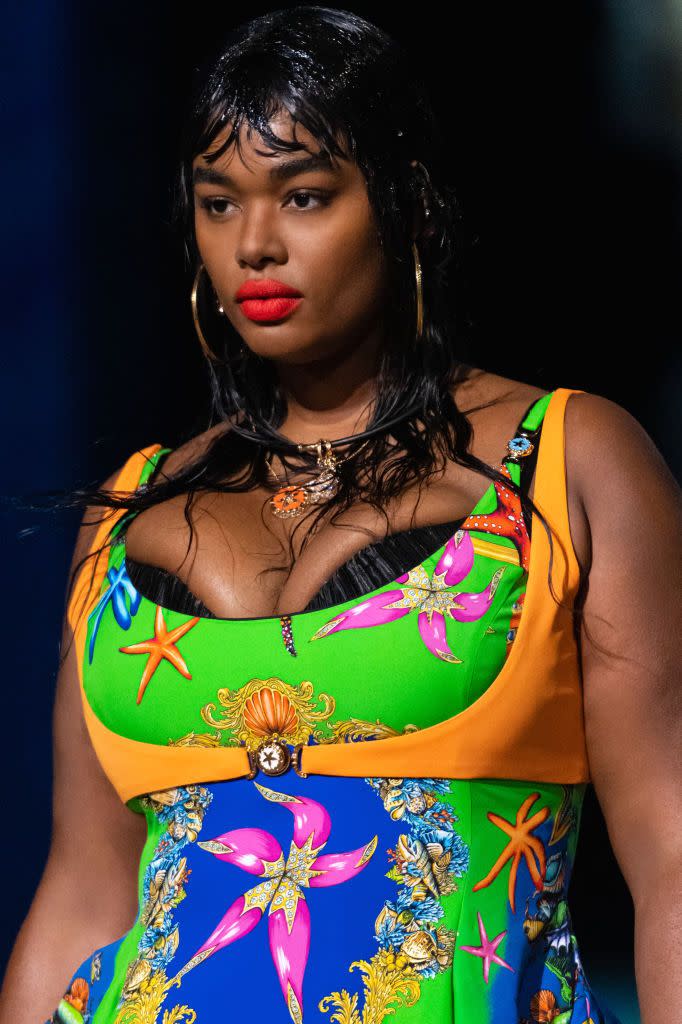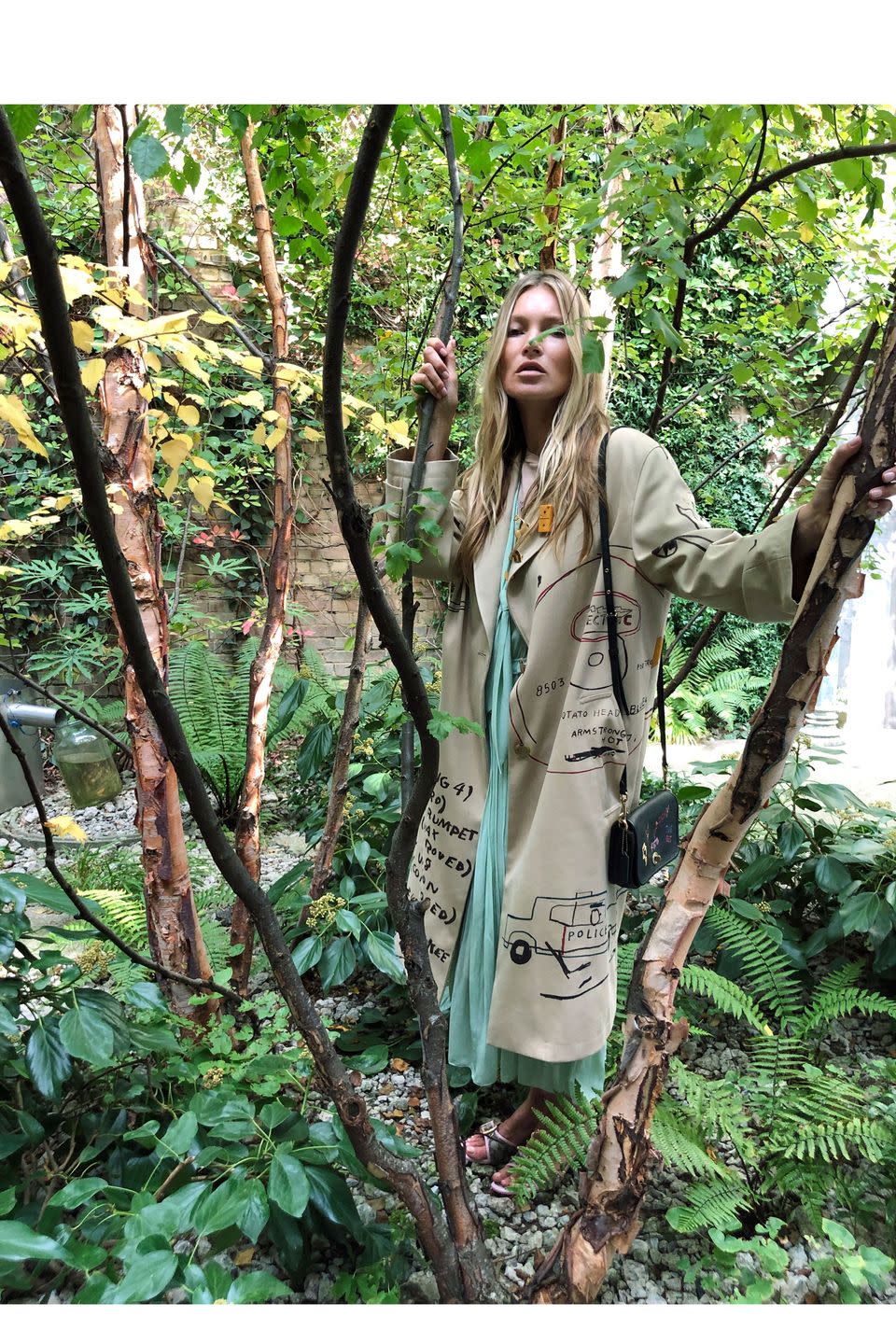Spring 2021's Biggest Trend Might Just Be The Past

A nation of hypebeasts turned its eyes to Milan for Prada’s spring 2021 show, which featured Raf Simons’s much-buzzed-about debut as the brand’s co–creative director, luring a whole new audience. But longtime Prada-philes quickly spotted two archival prints from the spring and fall 1996 collections—reworked with screen-printed text courtesy of artist and frequent Simons collaborator Peter De Potter. It was only one of many cases of fashion déjà vu this season. Versace put a new spin on the Trésor de la Mer aquatic prints from its spring 1992 collection; Gucci reissued looks from creative director Alessandro Michele’s debut collection in 2015; and Coach reintroduced pieces from the past few seasons, including fall 2020. Admittedly, designers taking trips into the archives is hardly a new phenomenon. But usually, they’re poring over the greatest hits of the ’50s, ’60s, or ’70s. The spate of ever-more-recent reissues seems to tap into the increasingly seasonless, time-is-a-flat-circle quality of fashion amid pandemic uncertainty. The distinctions between fashion seasons have melted like Dalí clocks, the need for newness replaced by a longing for the familiar.

It also speaks to the way we’re actually dressing now: raiding our personal “archives” to reexamine what we already own with new eyes. Rather than the post-2008 recession pastime of “shopping your closet” (could you imagine anything more dull?), we’re taking stock of our wardrobes and remixing them with all things new, vintage, upcycled, and consignment. Is it any wonder that designers are following suit?
For Miuccia Prada, rebooting the 1996 motif came from the concept of decision-fatigue-reducing dressing. With this collection, “We wanted to create something that makes sense to people, something that is useful,” she says. “Everything we do should allow people to live better.” Adds Simons, “A uniform needs to express something that is more timeless than a season-specific fashion item. The idea of a uniform is a representation of longevity.”

The thinking behind reviving Trésor de la Mer was “not just to select a print from the past and put it on today’s silhouettes,” explains Donatella Versace. “There are a few things that this exercise allows us to do. The first is to reiterate that fashion can indeed be forever—that an idea that was good in the past can be translated into something equally good for the generations of today.” But, she says, a revival like this also needs to reflect the current moment and the brand’s evolution—so that it feels as fresh on, say, Precious Lee for spring 2021 as it did on Linda Evangelista in 1991.

At Gucci, Michele asked, in his show notes, what happens “when fashion leaves its comfort zone.” One of the answers seemed to be giving existing clothes a new life, imagining “what happens to them when the runway spotlights fade out.” So pieces he created six years ago, like a bloom-print dress and a faux-fur coat, got their moments in the limelight once again. Similarly, during lockdown, Coach creative director Stuart Vevers found himself reflecting on his tenure at the brand amid fashion’s daunting new reality. “As I was thinking about what to explore in this new world,” he says, “I looked back to look forward,” reissuing, among other items, a trench coat adorned with Basquiat drawings from fall 2020 and a dress from Coach’s spring 2018 collaboration with Keith Haring’s estate.

While designers’ own self-examination partially fueled the hindsight-is-20/20 phenomenon, the boom in resale (embraced by some fashion houses, with Gucci and Anna Sui recently partnering with The RealReal and Depop, respectively) has had the effect of making “so last season” a thing of the past. Vevers saw his collection as an antidote to the mandate that everything be brand-new. “Perhaps there’s something about challenging the status quo, challenging the rules that have been created in the world of fashion,” he reflects. “If there was ever a moment to do that, this felt like it.”
“If you want to stay relevant and be part of the cultural conversation, you cannot just go back to the archive,” Versace points out. “The archive can be the starting point, but then everything needs to be looked at with the eyes of today. The questions that I always ask myself and my design team are: ‘Is this new? Is this modern? Is this what people need now?’ Fashion for me is a way to make people dream and escape reality, but I need to make sure that what I create has a place in the world.”
This article appears in the April 2021 issue of ELLE.
You Might Also Like

